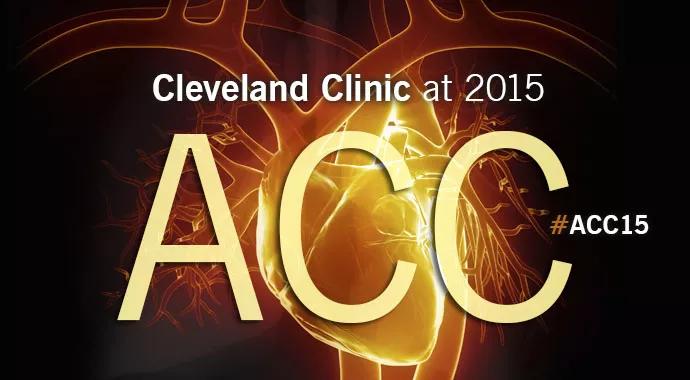Takeaways from landmark trial of noninvasive testing strategies in CAD

By Milind Desai, MD
Cleveland Clinic is a non-profit academic medical center. Advertising on our site helps support our mission. We do not endorse non-Cleveland Clinic products or services. Policy
Coronary CT angiography (CTA) or stress testing? For years that’s been the question for cardiologists evaluating new-onset chest pain in patients without diagnosed coronary artery disease (CAD). It’s a question that arises all the time for busy cardiology practices, making the lack of consensus on the best approach an important and long-standing problem.
Now we have the most complete attempted answer to date, with the presentation of outcomes from the large, randomized Prospective Multicenter Imaging Study for Evaluation of Chest Pain (PROMISE) at the American College of Cardiology’s 64th Annual Scientific Session (with simultaneous publication in the New England Journal of Medicine).
The PROMISE investigators randomly assigned 10,003 symptomatic outpatients to anatomic assessment with coronary CTA (N = 4,996) or functional testing (N = 5,007). Patients in the functional testing group underwent nuclear stress testing (67.3 percent), stress echocardiography (22.5 percent) or exercise ECG (10.2 percent).
The study’s composite primary end point was death, myocardial infarction, hospitalization for unstable angina or other major procedural complication. The exclusion of “need for revascularization” within the end point was a wise decision, as it is generally considered a soft endpoint with a justified criticism related to “oculostenotic reflex.” Secondary end points included cardiac catheterization that did not show obstructive CAD and radiation exposure.
PROMISE was a tightly controlled study supported solely by the NIH and performed entirely in the United States. This ensured that variations in selection criteria were kept to a minimum and country-based differences in optimal medical therapies were nonexistent. The selection criteria for symptomatic patients are highly relevant to clinical practice.
The pre-test likelihood of obstructive CAD was calculated using criteria from Diamond and Forrester and the Coronary Artery Surgery Study, both of which were developed in the 1970s. These formulas put the majority of patients in the intermediate risk category, where noninvasive testing provides the biggest bang for the buck.
No significant difference in primary events between the coronary CTA arm and the stress-testing arm (3.3 vs. 3 percent) was seen over two years of follow-up. This was not surprising.
However, it was surprising that the actual event rate was much lower than what was predicted by the above criteria. I believe an important offshoot of PROMISE will be the recognition that these criteria are likely outdated, and that more relevant criteria are needed for determining the pre-test likelihood of CAD.
On the bright side, as a practicing cardiologist, I am encouraged by these low event rates, which suggest that we have become much better at reducing events with good drugs for cholesterol, hypertension and diabetes.
The coronary CTA strategy led to more downstream cardiac catheterizations, which would be expected, because CTA evaluates and detects anatomic abnormalities while stress testing evaluates heart function. However, CTA resulted in significantly fewer patients with no obstructive CAD, which means fewer unnecessary catheterizations were performed after CTA than after stress testing (3.4 vs. 4.3 percent).
Again, this shows excellent progress in this field, considering that some of the same authors previously demonstrated that after some forms of noninvasive testing, 38 percent of subsequent catheterizations showed significant CAD. The PROMISE study found that an abnormal CTA or stress test was associated with an approximately 96 percent likelihood of finding a significant lesion on angiography. Therefore, the number of inappropriate invasive catheterizations seems to have gone down. This also suggests that when patient selection is appropriate, unnecessary downstream testing is minimized.
Mean radiation exposure was higher with CTA than with stress testing (12.0 vs. 10.1 mSv), but the median radiation exposure with CTA was lower (10.0 vs. 11.3 mSv). However, if you compare only the two techniques that radiate patients — CTA and nuclear stress testing — the median radiation dose in the CTA group was significantly lower (10.1 vs. 12.6 mSv).
If you are concerned about radiation exposure in a young patient, the best option would be to perform a stress echo, since this strategy is noninferior to the other strategies. A stress echo would be preferred to a plain ECG stress test, due to the high rate of abnormal baseline ECG abnormalities, particularly in women. However, stress echo acquisition can be challenging and should be performed in a high-volume center with technical experience and proficiency.
If the radiation dose is not a concern, my tendency would be to consider coronary CTA, as it is less likely to result in unnecessary downstream catheterizations. That said, the study points out that despite improvements in CT radiation reduction techniques, many centers still use a high radiation dose for a standard coronary CTA. This underscores the importance of having CTA performed at an experienced center like Cleveland Clinic, where we have been able to lower the radiation dosage associated with a coronary CTA to less than 5 mSv (and less than 1 mSv in many cases).
With the emergence of newer techniques that can be added on to the anatomic analysis, such as noninvasive fractional flow reserve measurement and stress perfusion by CT, there is potentially added value for coronary CTA in the future. Whether or not this pans out remains to be seen.
Dr. Desai is Director of Cardiovascular Imaging Research in Cleveland Clinic’s Robert and Suzanne Tomsich Department of Cardiovascular Medicine.

Surprise findings argue for caution about testosterone use in men at risk for fracture

Findings support emphasis on markers of frailty related to, but not dependent on, age
![GettyImages-1252287413 [Converted]](https://assets.clevelandclinic.org/transform/StoryPanel/350804b2-f1e4-4d97-a277-9629cf45af3e/23-HVI-4120348_redlining_650x450_jpg?w=3840&q=75)
Large database study reveals lingering health consequences of decades-old discrimination

Additional analyses of the two trials presented at 2023 ESC Congress

Prospective SPIRIT-HCM trial demonstrates broad gains over 12-month follow-up

An ACC committee issues recommendations to accelerate sluggish progress

Review of our recent experience shows it’s still a safe option

Machine learning may improve risk prediction and guide therapy